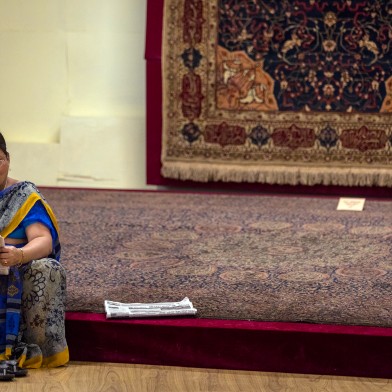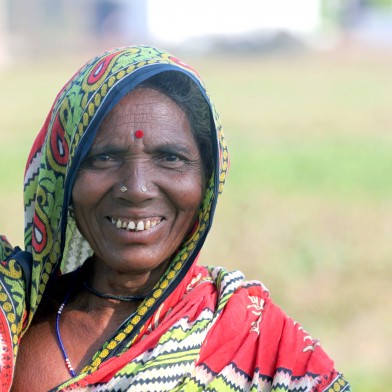Professor Raja Mohan is one of India’s leading academics and foreign policy analysts. He is currently the Director of the Institute of South Asian Studies, at the National University of Singapore.
In Wellington last week for the QS Summit at Victoria University of Wellington, he sat down with the Asia Media Centre’s Graeme Acton to discuss India’s way forward, and this country’s strategy dealing with India’s increasing influence in the region.
Donald Trump is in India this week for talks – how does India see its relationship with the USA in 2020?
The US stands out very highly with the Indian people, it has done since the 1960’s when the Indian middle class became attracted. Popular opinion on the US is still very positive. India has changed, but the US has also changed: The American policies now on things like Kashmir, nuclear weapons - those things are not the sticking points they were, and the US has won trust.
The US and India are integrated in many ways over many areas now.
The “dispute”, if you can call it that, is over trade and Mr Trump’s visit to India may not come away with anything hugely tangible. They are very hard negotiators these Americans and I think India has underestimated to an extent just how important the free trade model is to Washington at this moment.
I think we were lulled into some complacency because the Bush and Obama White Houses were willing to give India a pass on the trade issues, as long as it moved ahead on other things.
George Bush was interested in India’s help on security issues, Barack Obama was interested in India’s help on climate change. India took a long time to realise that with Donald Trump, trade comes first.
Total two-way trade between the US and India was around $150 billion last year, much more than the $90 billion with China. How does India deal with an increasingly protectionist US under Trump?
I think India has to be careful not to get bogged down in the small-bore trade stuff with the US and others.
It has to keep an eye on the big picture. A relatively small trade agreement worth around $10b is yet to be signed, but we’re in a new world when it comes to trade, and the Trump administration will continue to change global trade.
That’s important for India, because the US trade relationship is the most important one it has.
What is India’s current strategy with regards to China’s rising influence in the region?
India’s always tried to be friends with China throughout history, but that’s sometimes been difficult. There’s a history of tensions going back many decades, and now India faces issues with China it has never faced before. China’s power is now omnipresent in India’s neighbourhood, and dealing with that has become a major issue.
So India has, over the last few decades, done a lot to get closer to the US.
China’s rise makes that more likely, but India has to also hedge against the unpredictability of the US and so India is keen to work with its friends in the South Pacific and elsewhere.
In the end, we can’t leave the future of India to the mercy of Washington, and I think there’s room to construct coalitions with like-minded nations. There is an opportunity for India to navigate a path between the two major powers, using region-specific coalitions, including with countries like Australia and New Zealand.
For India, the choice is not about whether to back China over the US or whatever. We have a set of issues with China which have been there for a while: the Kashmir boundary dispute, the trade dispute, as well as China’s hostility to India expanding its international profile.
On all these issues, the US supports India, and has become an important partner. That doesn’t mean India has the status of the UK or France or Japan for example, but India can play a role in shaping the balance, shaping a new framework for Asia – and we are still prepared to work with China, though at this point the Chinese are so strong they really don’t need any other partners, and they would prefer to deal with the US directly – that’s where the problem is.
Is India destined to become the “great power” promoted by Prime Minister Modi?
India is best seen as a middle power, it is yet to achieve that greatness that Nahendra Modi speaks of - it’s on the way - but it’s not there yet. It will be the world’s third largest economy in the future, but it will still be a distant third behind the US and China.
Is India struggling with its internal problems, poverty, religious tensions etc?
There are significant obstacles: India is still struggling to come to terms with the bitter legacy of partition in 1947, that's a significant issue. India can send a rocket to the moon, but that doesn’t mean its fixed its internal problems.
There’s been a lot of speculation about “burden-sharing” in the region, with obvious signals that the US is moving to exit Afghanistan, and demands from the US president that nations do more to “pay their way” in security. How does that impact India?
I think India has no choice but to do more, and step up into the security world in the region as the US pulls back. India has been right behind the Afghan government in Kabul for example, but if the political structure changes in Kabul, India will have to re-assess.
The Taliban has also been keen to engage with India, and India needs to be talking to all the actors in the region.
India also needs to work on how it can engage with the international community to secure some sort of on-going stability for Afghanistan. It may not send troops, but it has already played a part and it must continue to be involved.
What other security issues do you expect India to become involved in under the “burden sharing” concept?
India must up its engagement with Pakistan, and that also goes for The Gulf, The Indian Ocean, and global intelligence networks. India already has a couple of ships in the Gulf, securing Indian shipping, and that will continue. India certainly has the naval capacity in the Indian Ocean to step up in this region.
I mean, this is a “moment” for India , and while the US won’t totally pull out of the region. It will reduce its presence and that's a window for India to seize the opportunity to improve its own position in the region.
Indian Prime Minister Modi has been embroiled in the fallout over his proposed Citizenship Act, as well as the crisis over the decision last year to revoke the autonomous statehood of Kashmir. How focused to do think his administration is over trade issues?
My sense is that the second term of Modi has been quite focused on social issues that’s true, but I believe they will tone down parts of this agenda as we go on, and my sense is they will shift to a more economic focus.
Modi is still a rock star politician, he still has huge support despite the road bumps, his nationalism is very popular with the Indian electorate.
New Zealand’s Foreign Minister and Trade Minister are in India this week, with a brief to explore trade and other issues and how the two countries can work more closely together. India is of course hugely important to this country and has significant potential for trade growth, as well as for things like international students and tourism. How does New Zealand get closer to India?
New Zealand’s trick needs to be to find a new way to work with India. You should always be looking for new ways to work with India, and not just in commerce. There is a tremendous amount of goodwill, a huge scope for discussion, and the two countries are very close.
The India-New Zealand Free Trade Agreements seems to be progressing very slowly. How can New Zealand address that?
If trade is not working and the FTA concept is stuck, work on climate change , security , other areas of common interest, if the trade issue is a road-block, change tack and just move around it.
UPDATE: Following President Trump's visit with Prime Minister Modi, India signed an agreement to buy $3billion worth of military equipment, including helicopter, from the US. Despite negotiating since 2018, no trade deal was signed between the two countries. The proposed trade deal would have lowered Indian barriers to American products and addressed high tariffs on India products reaching the US.
- Asia Media Centre

